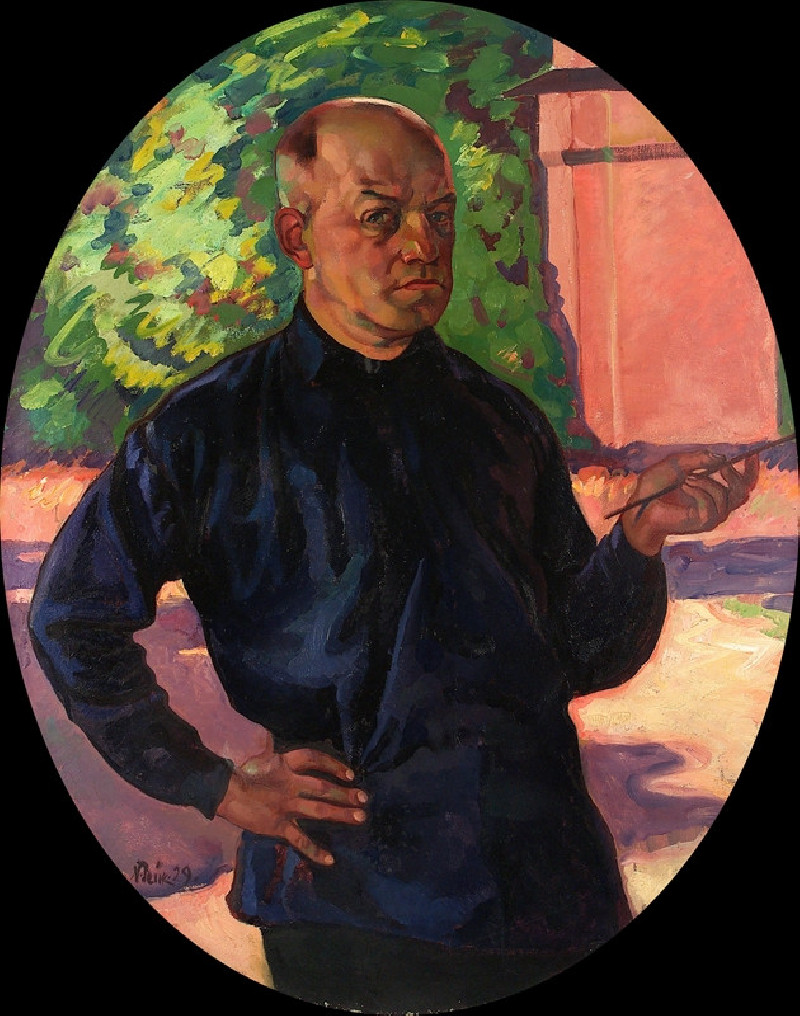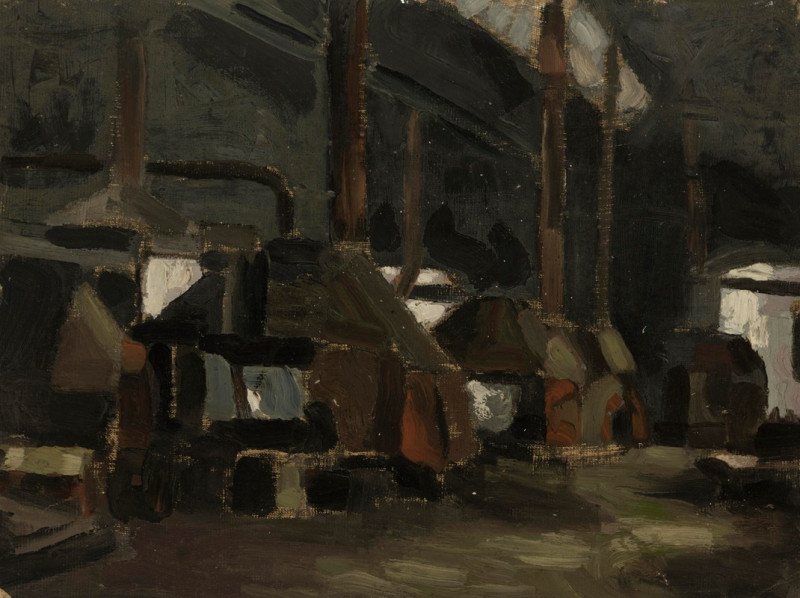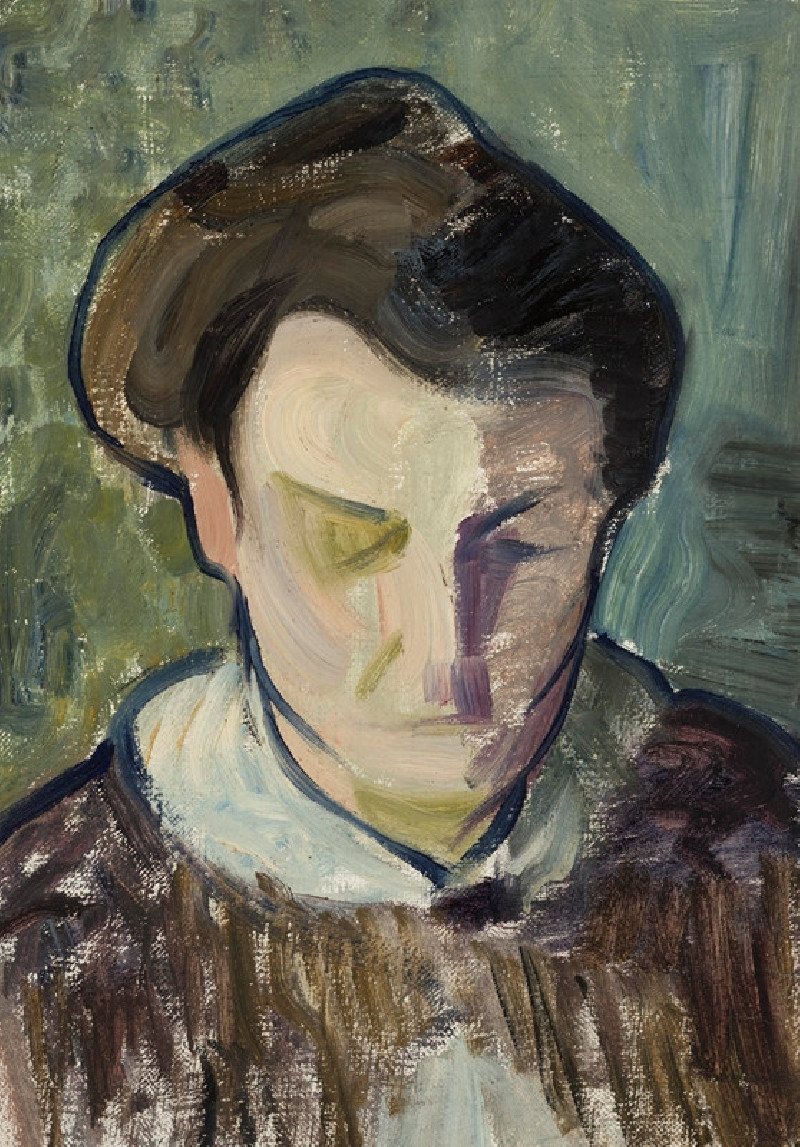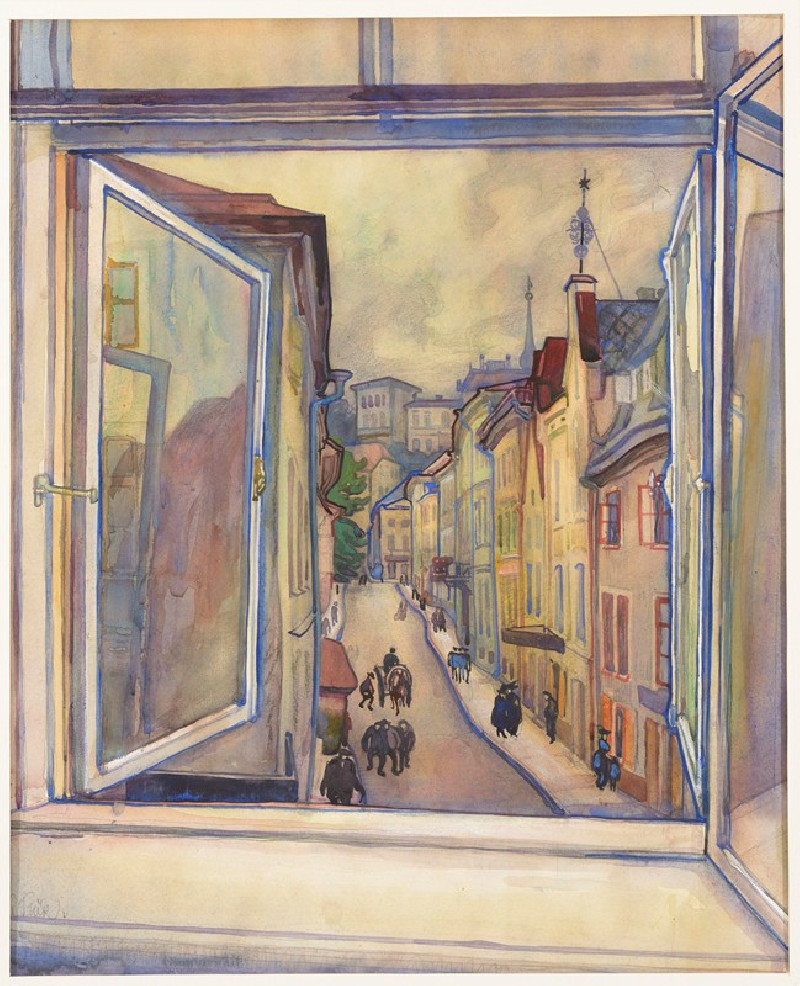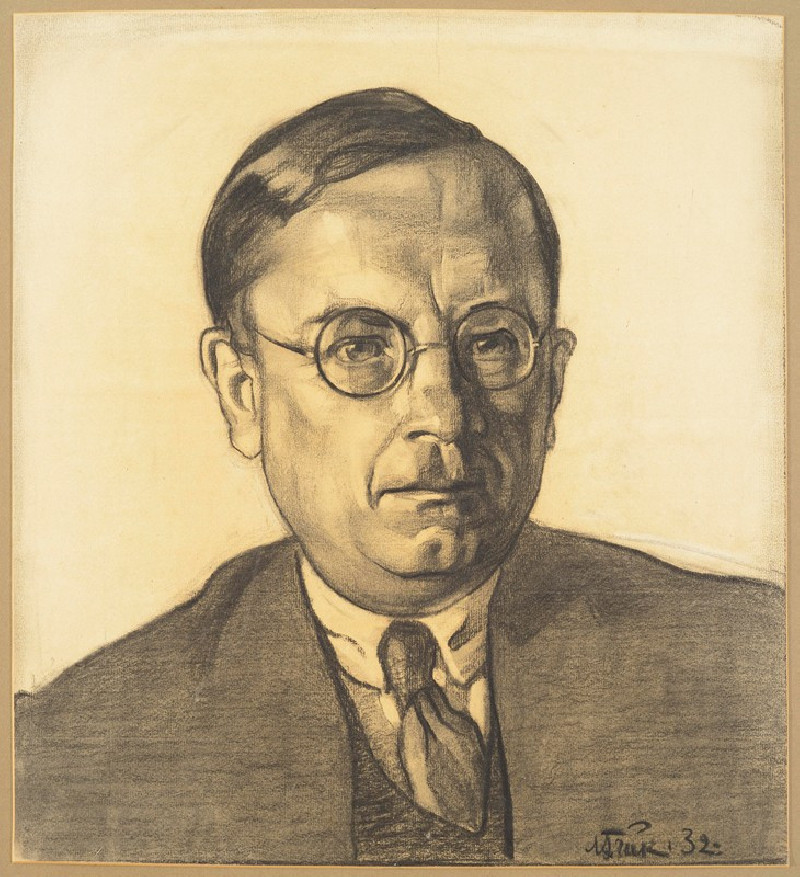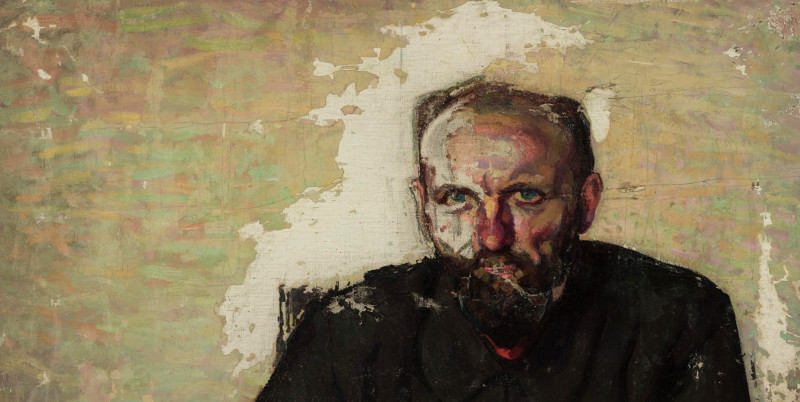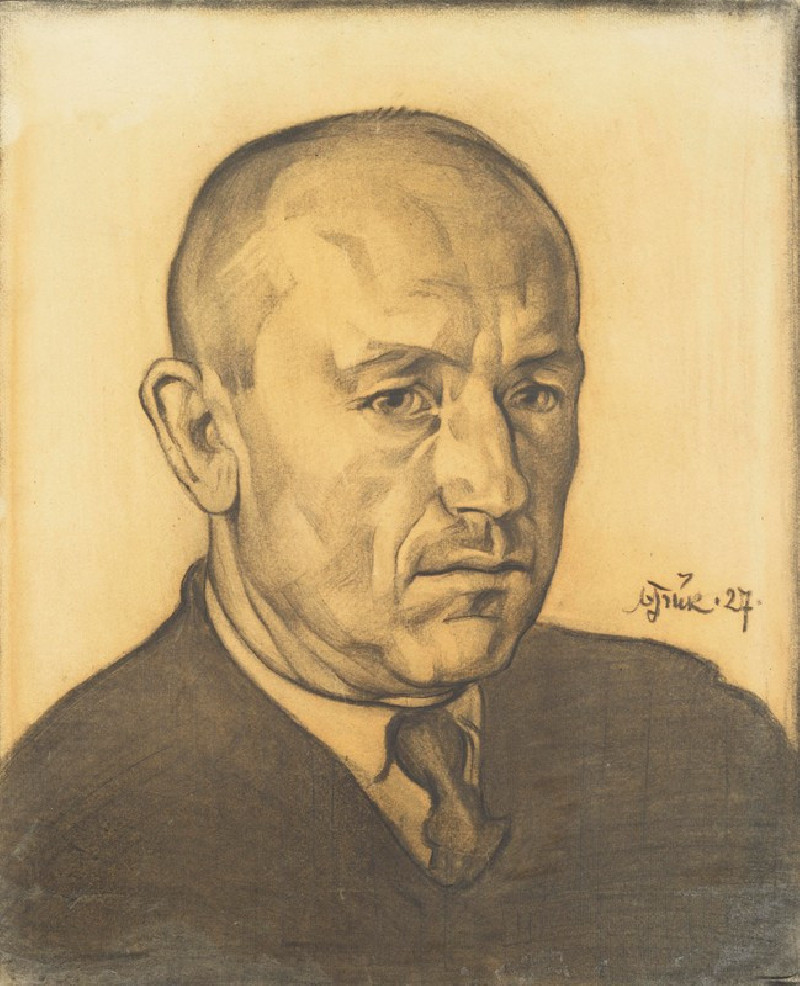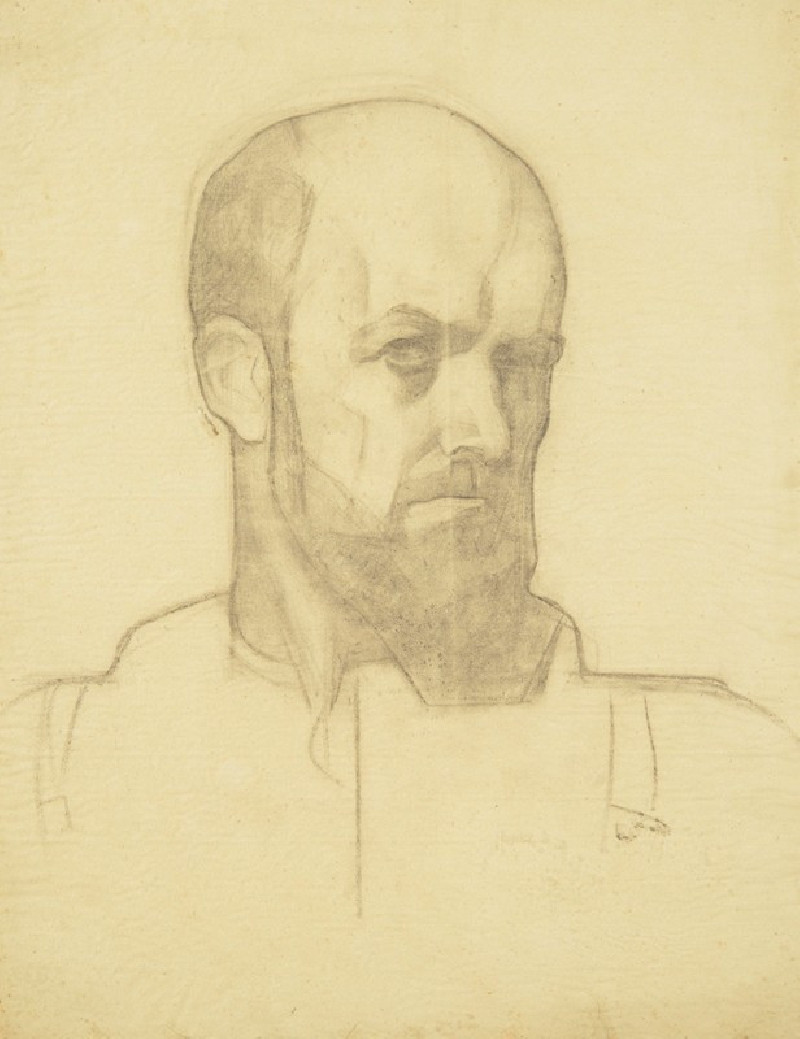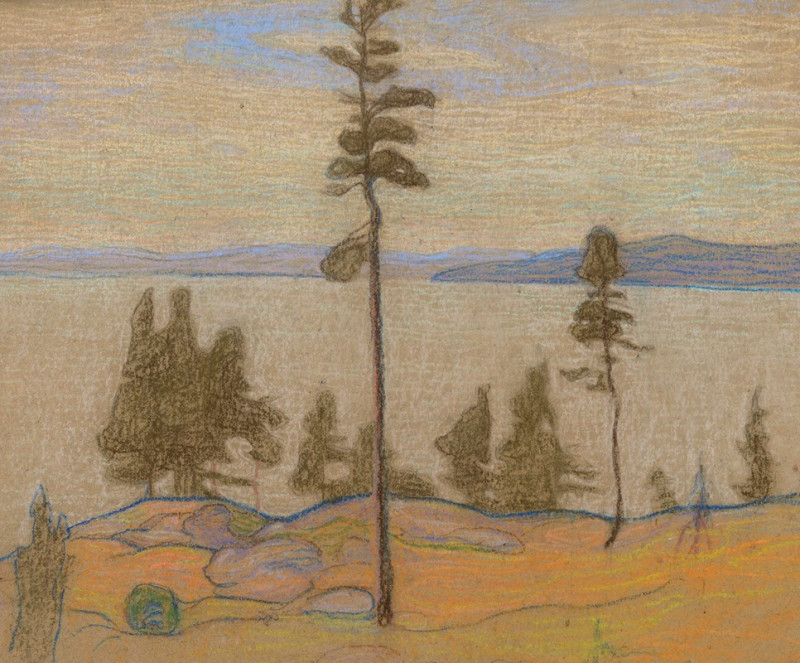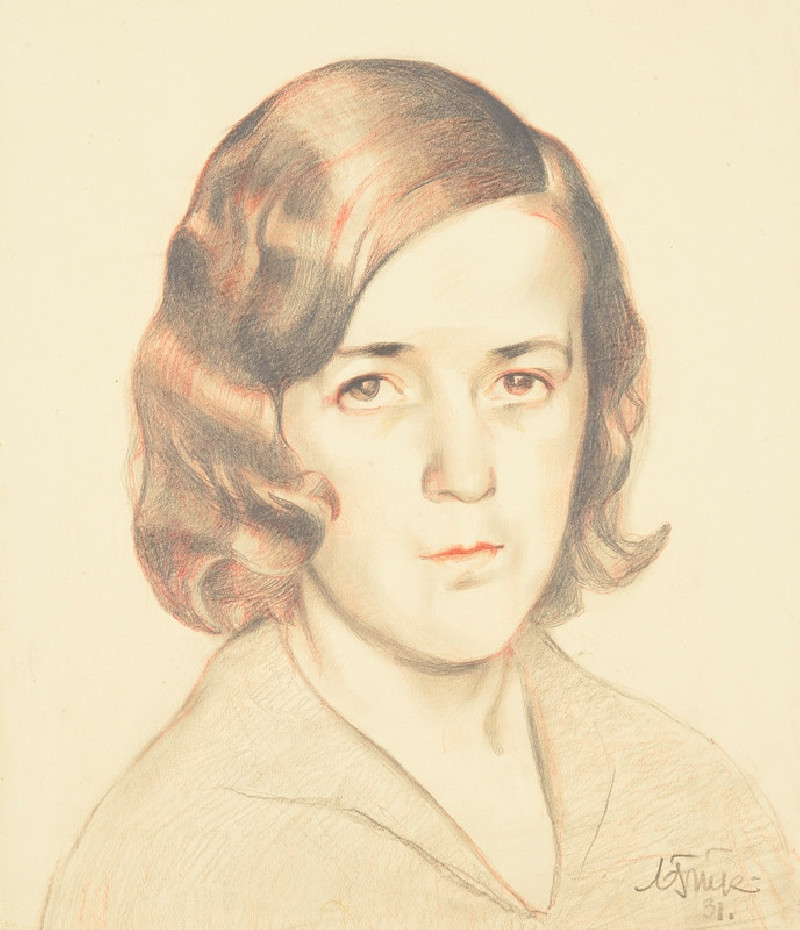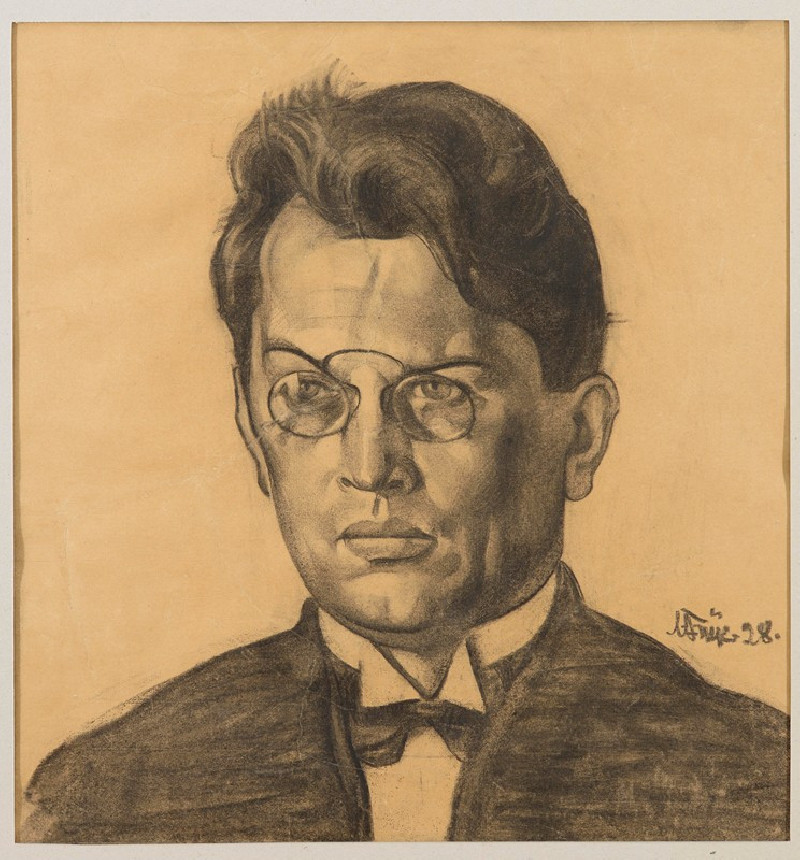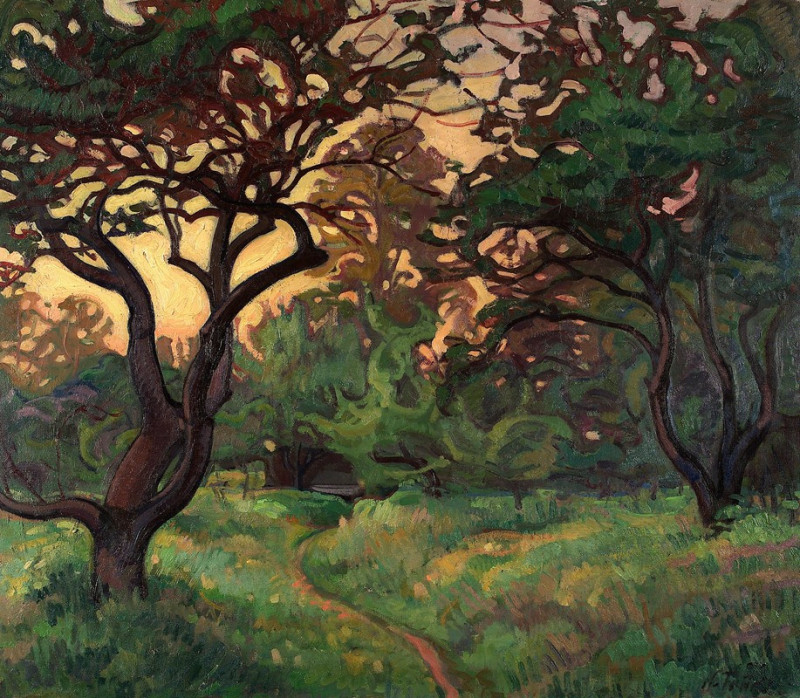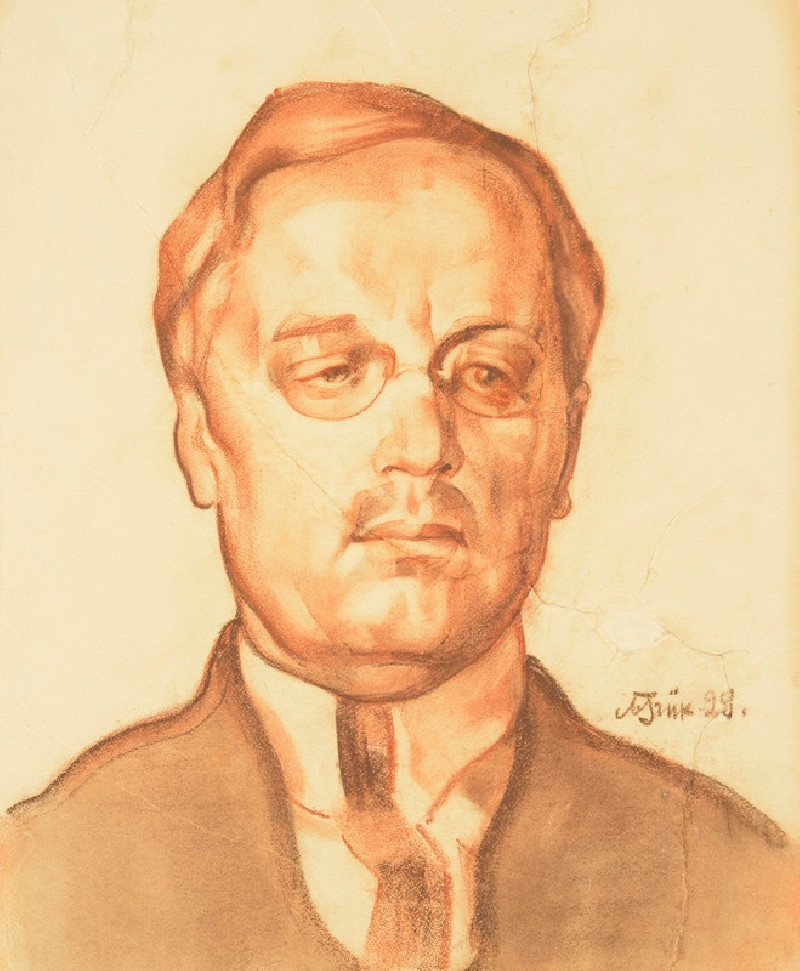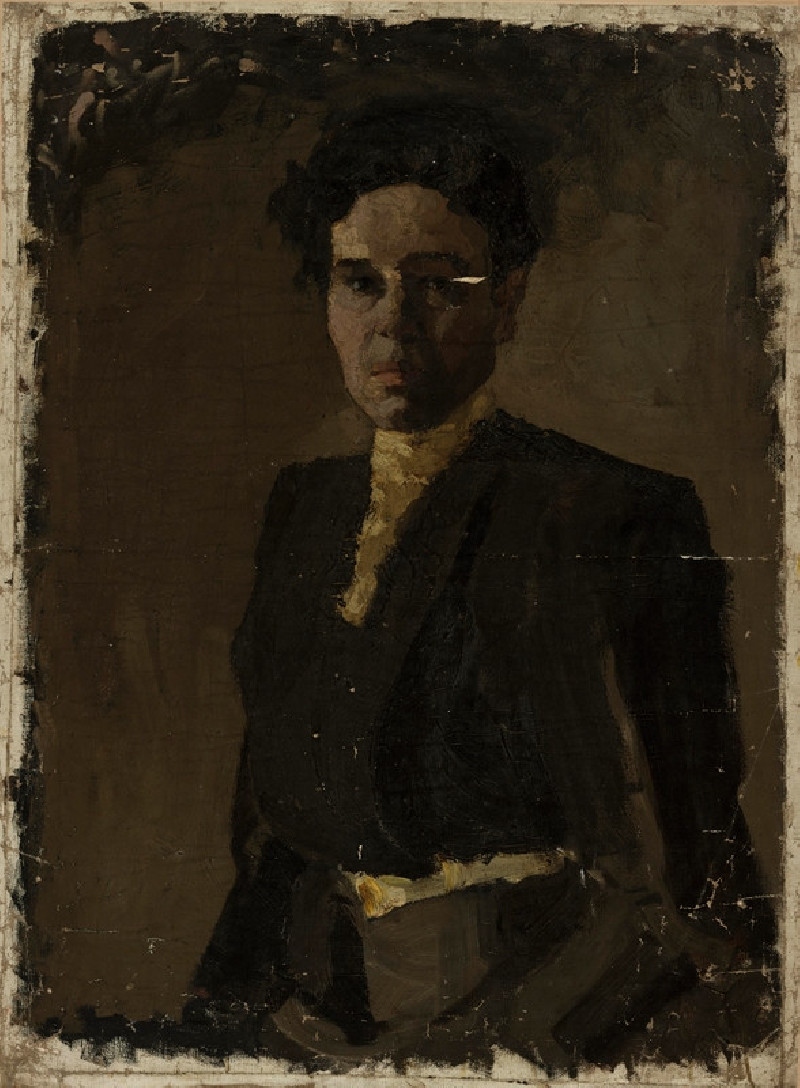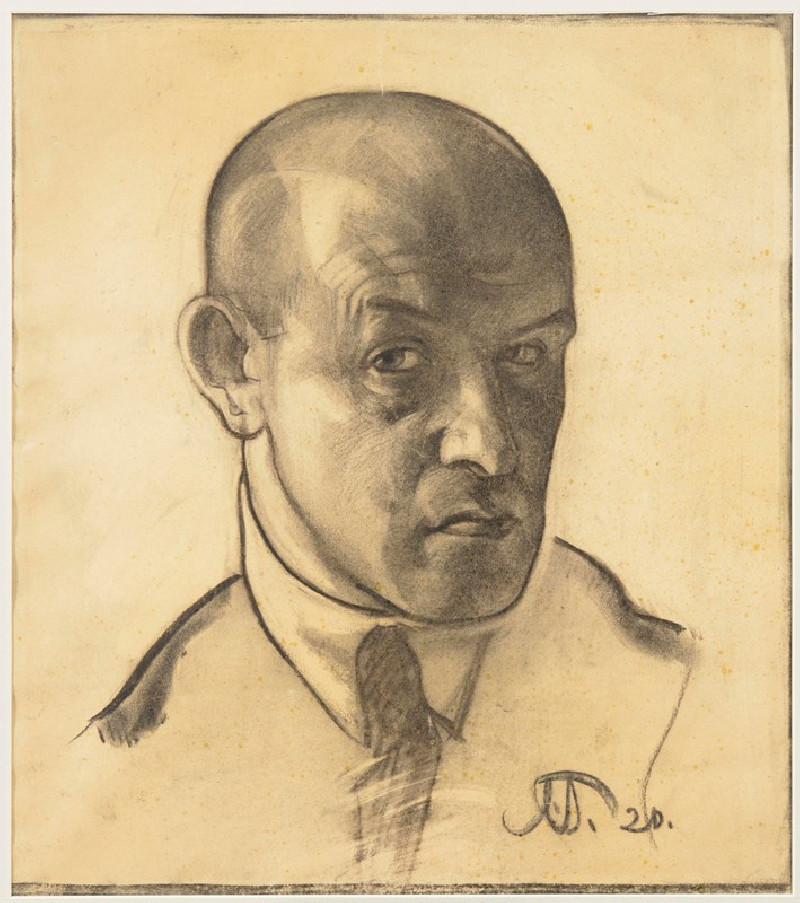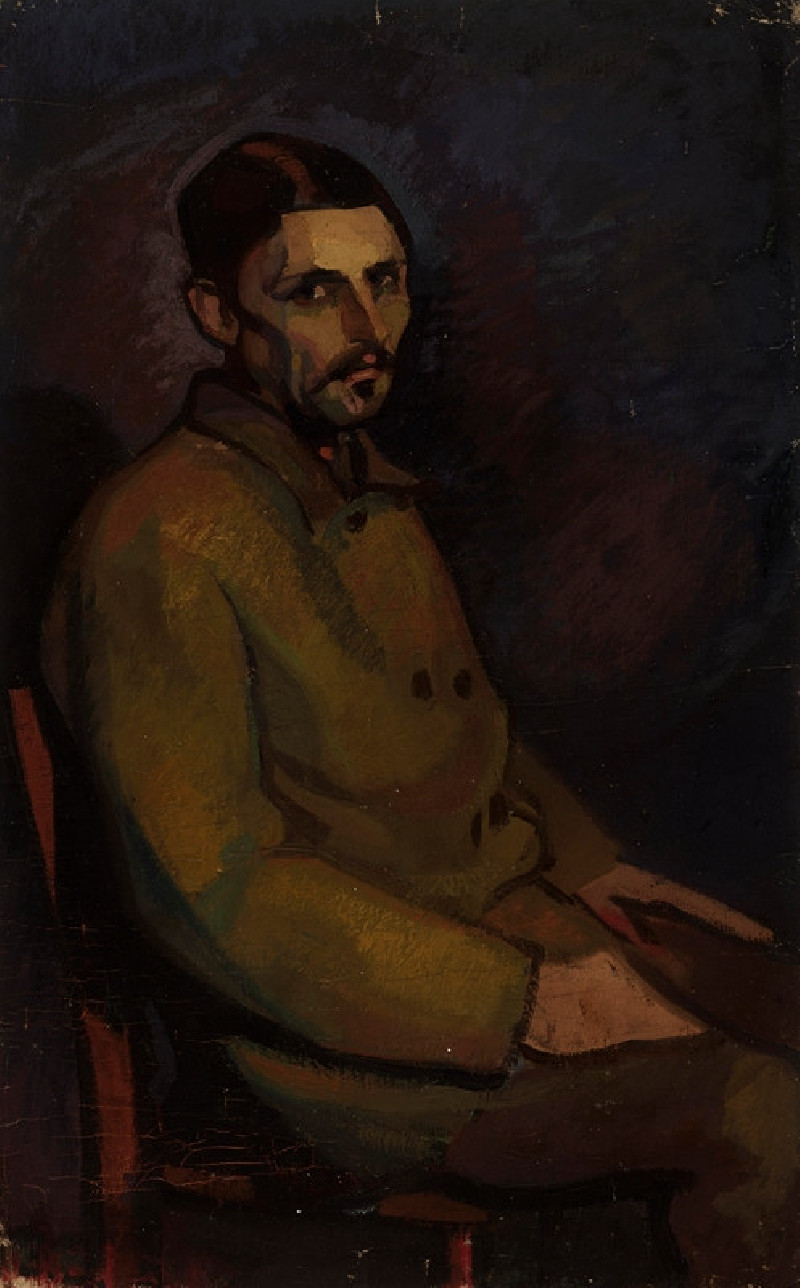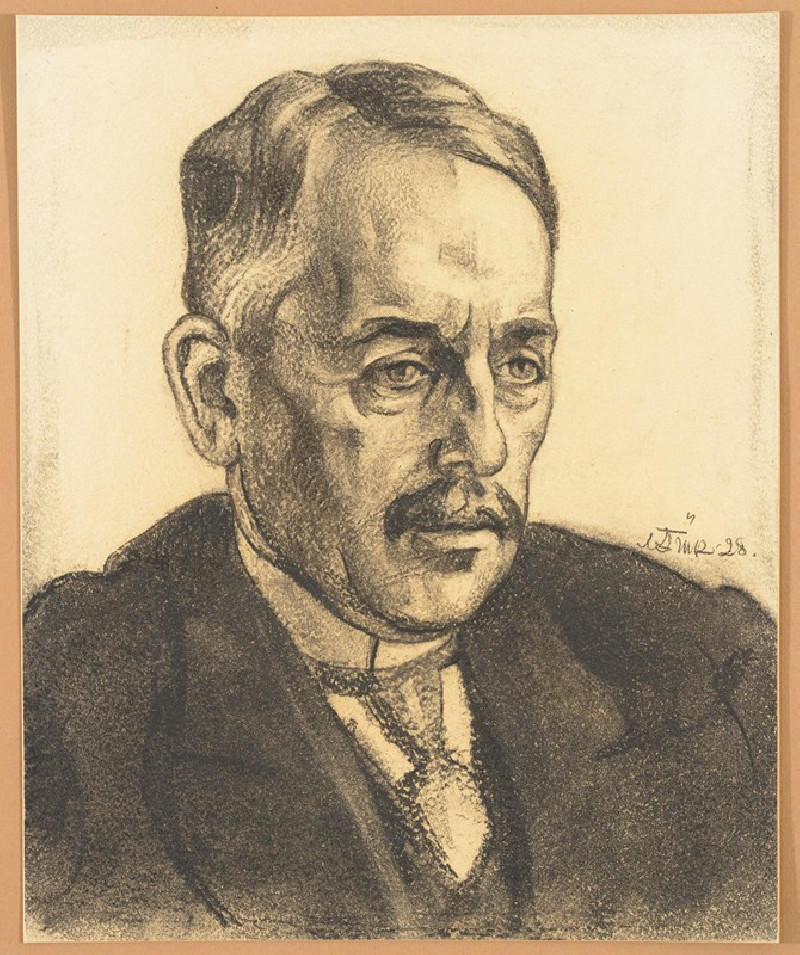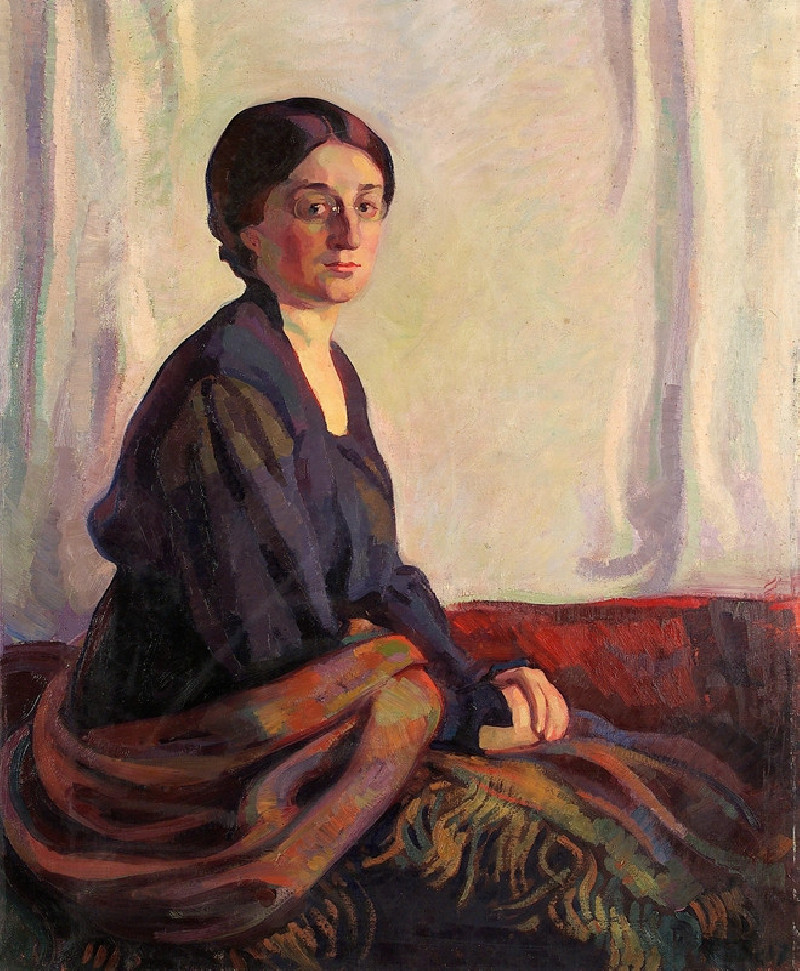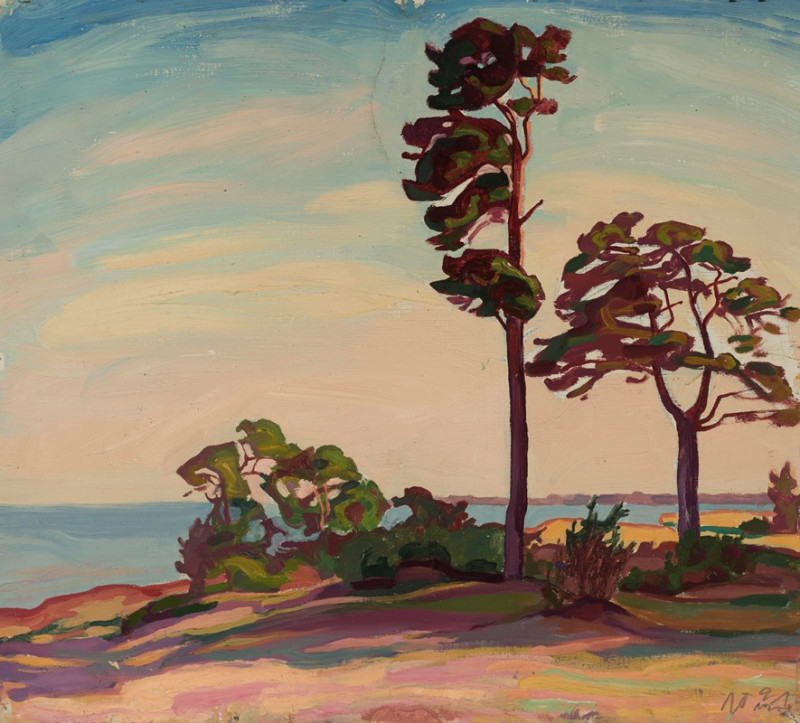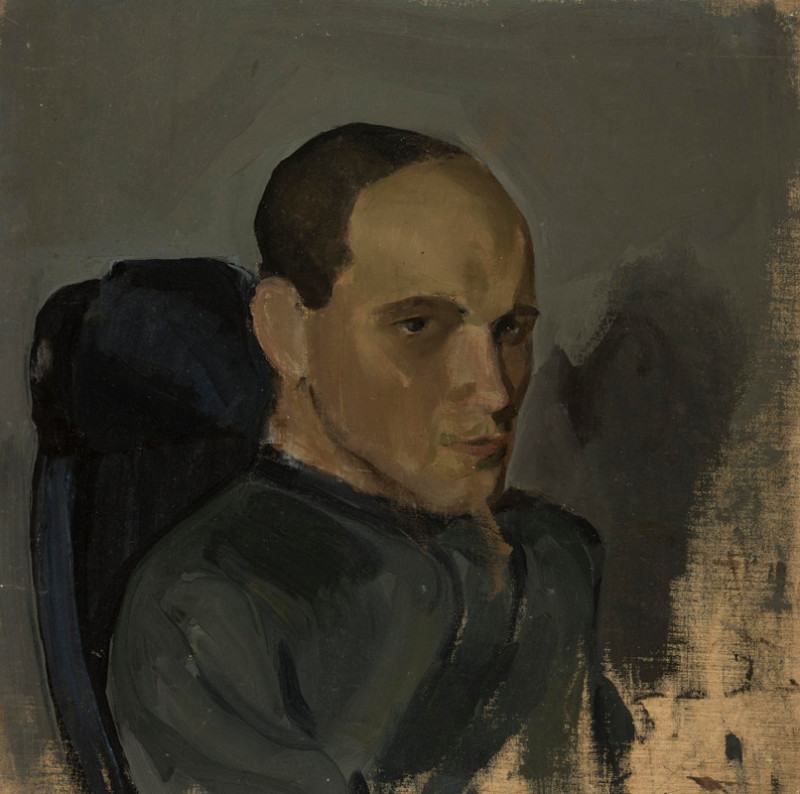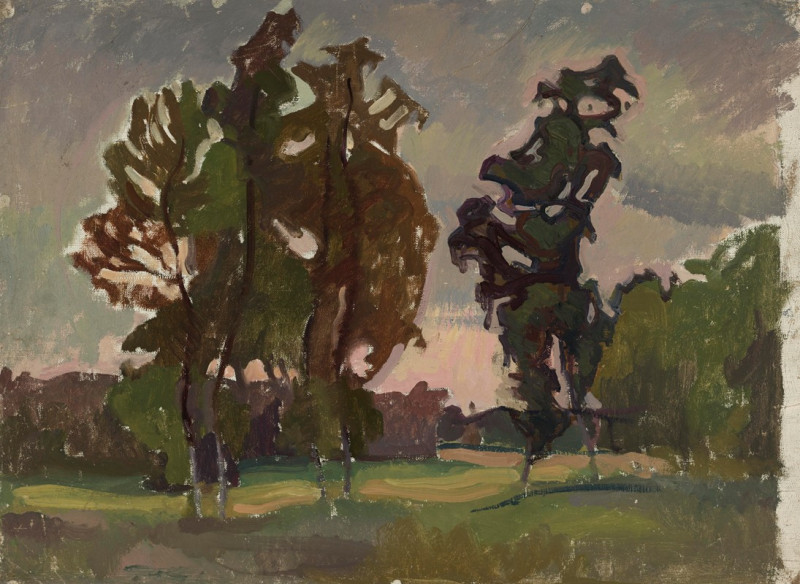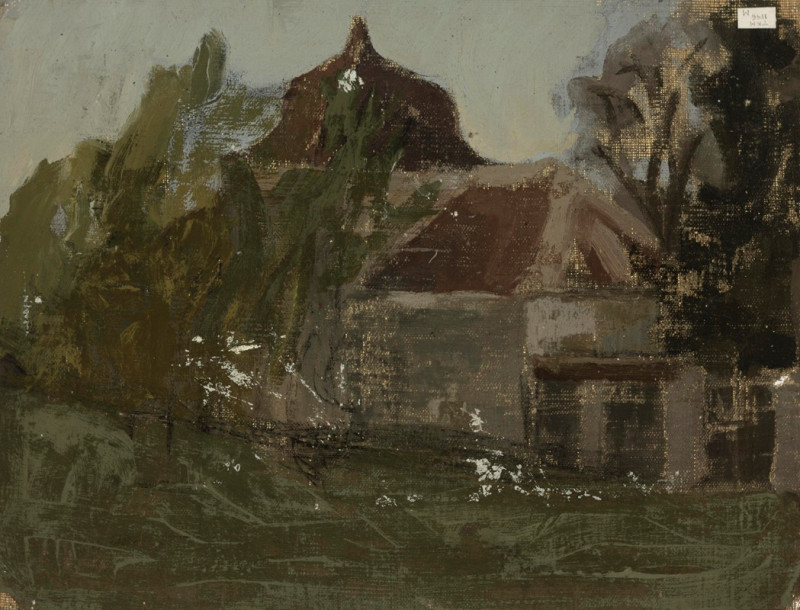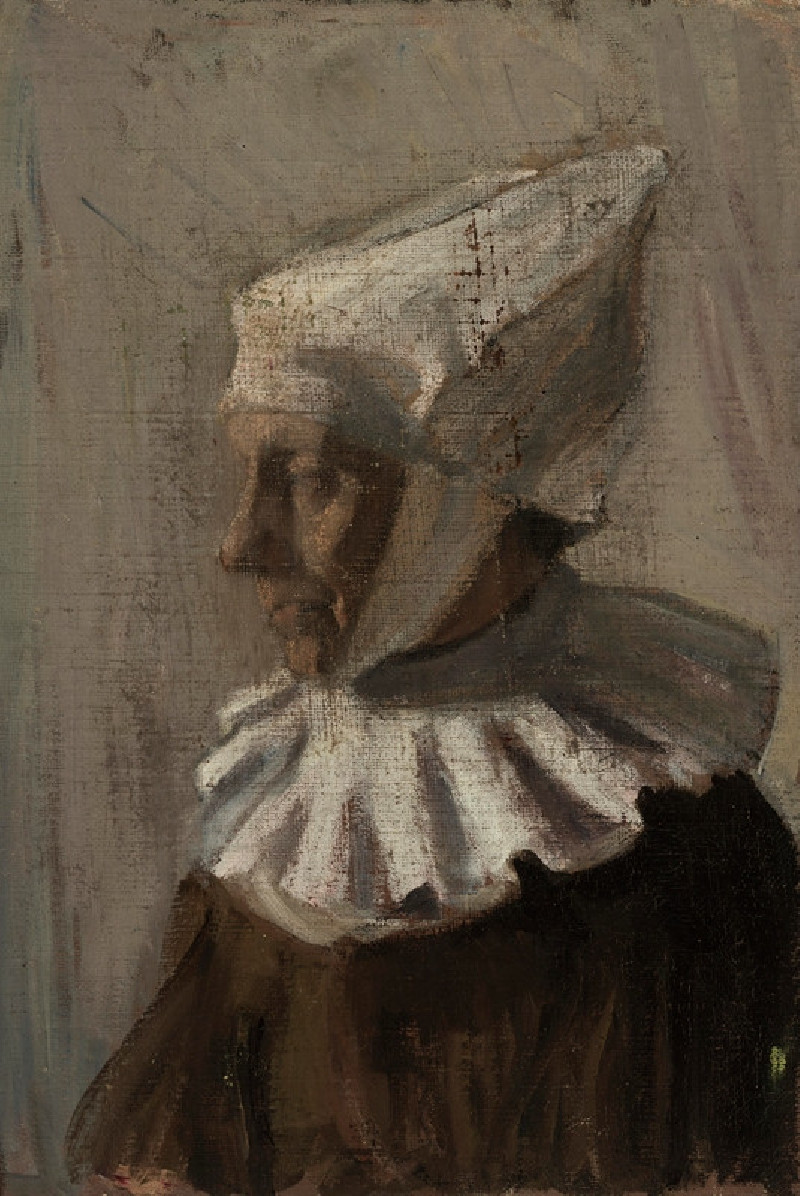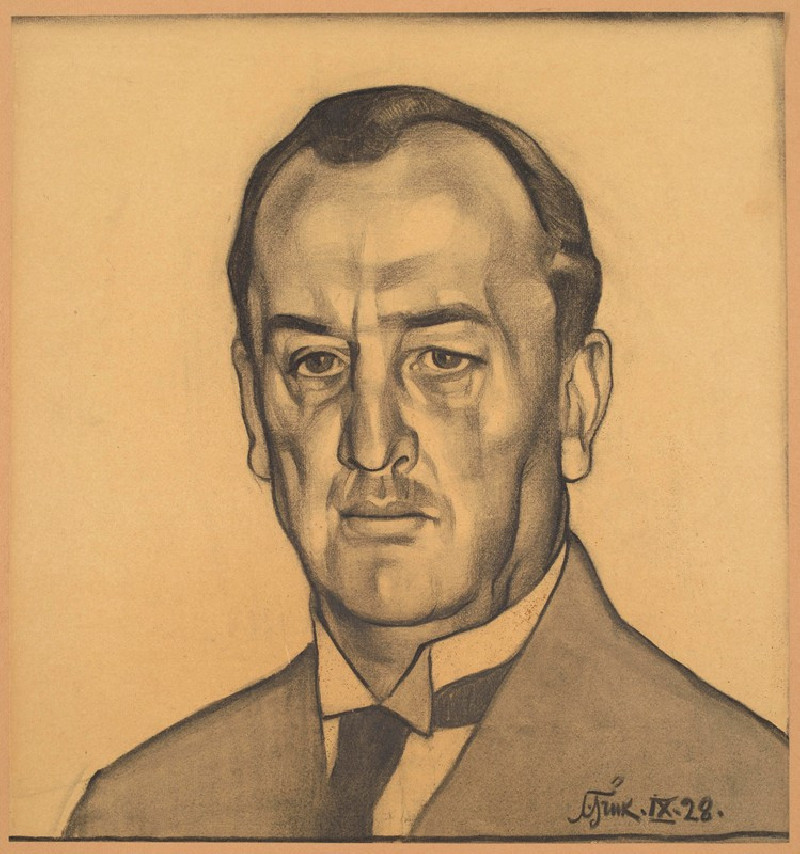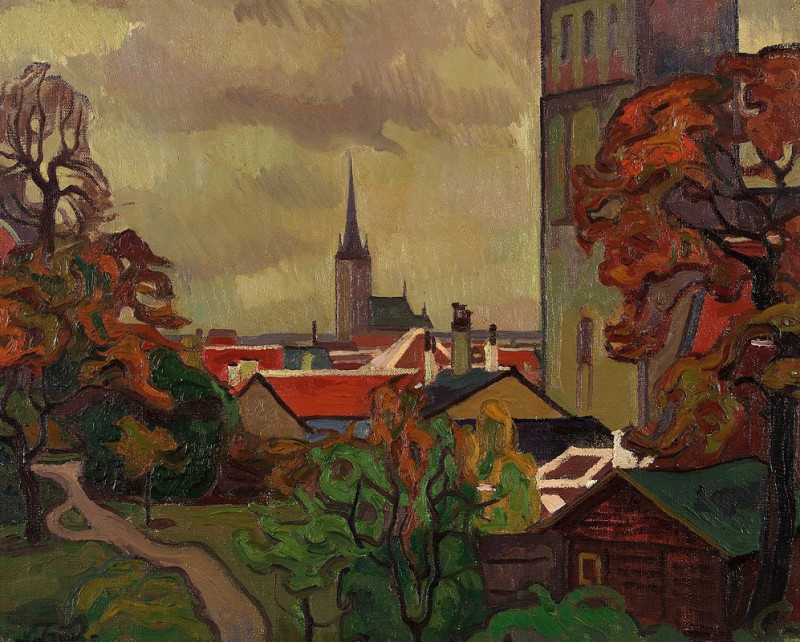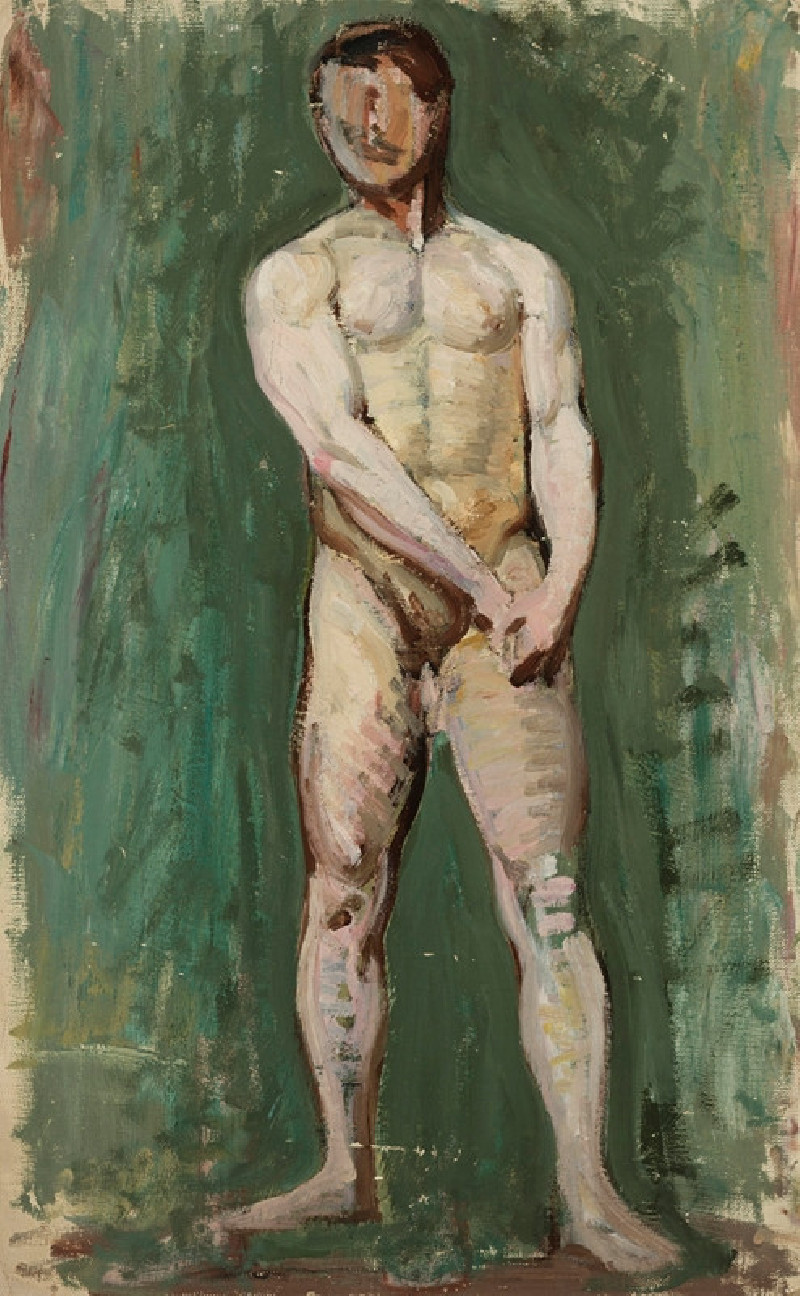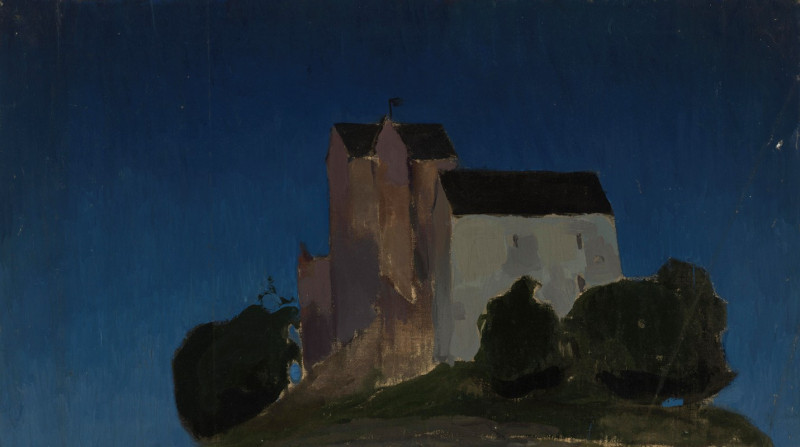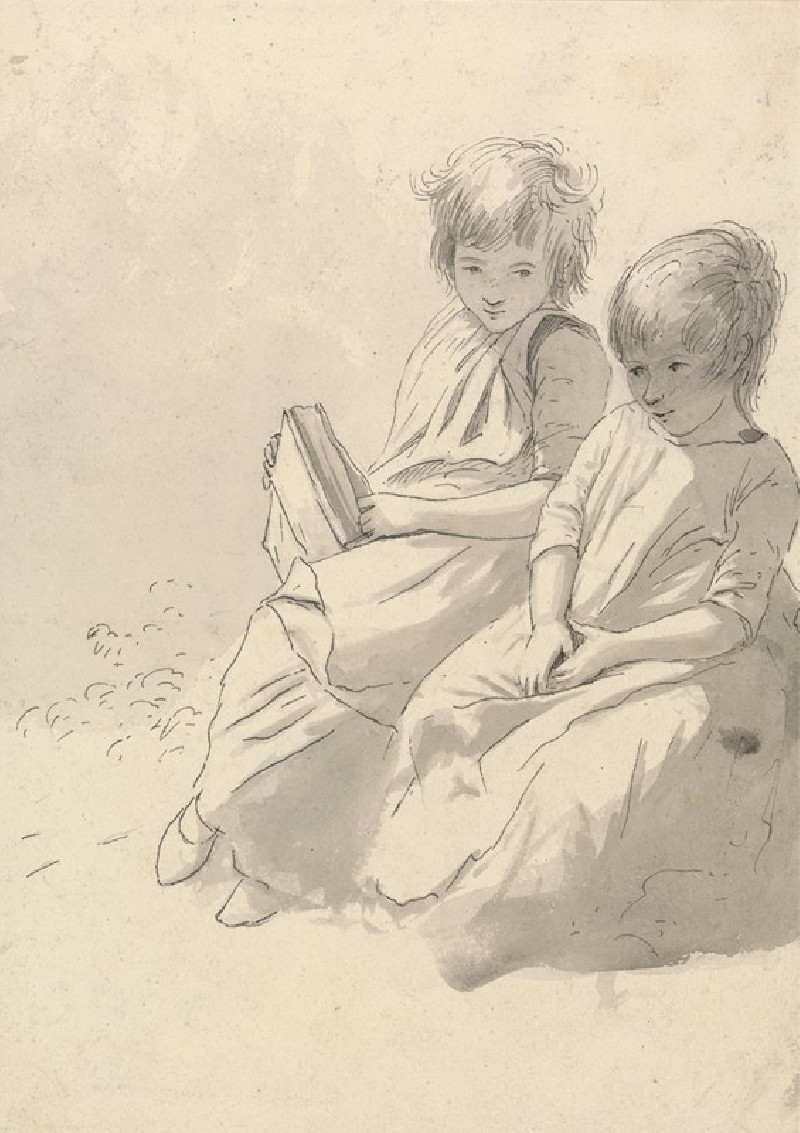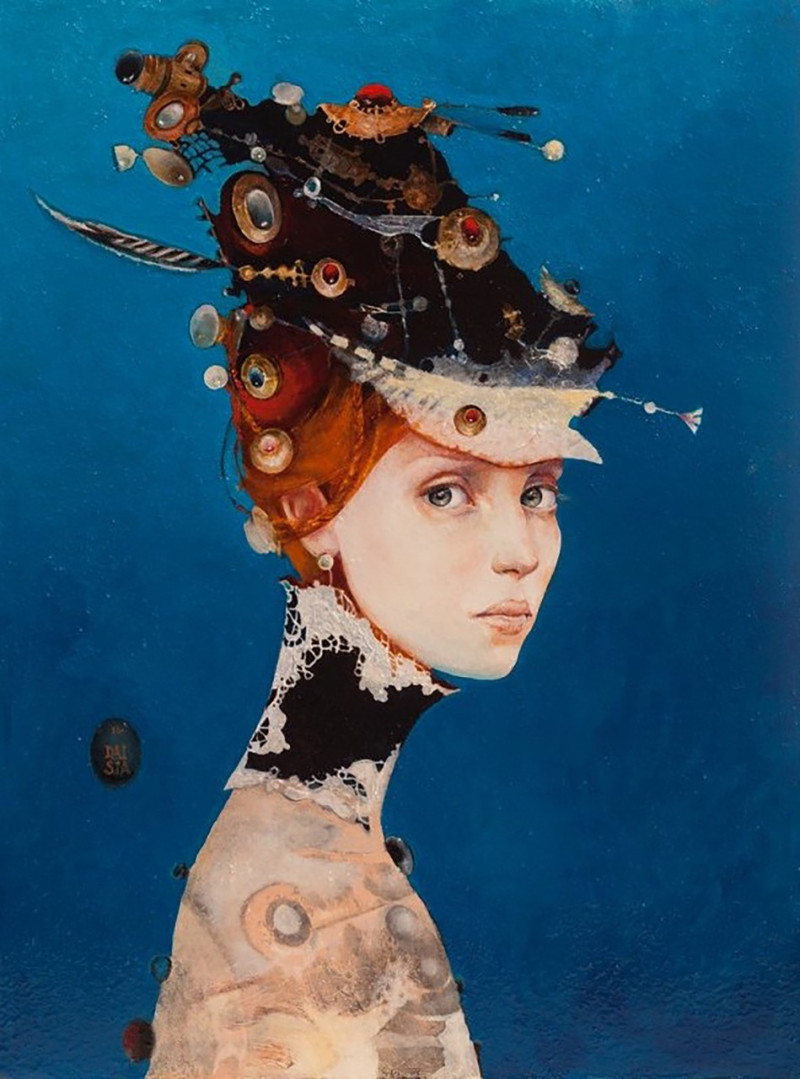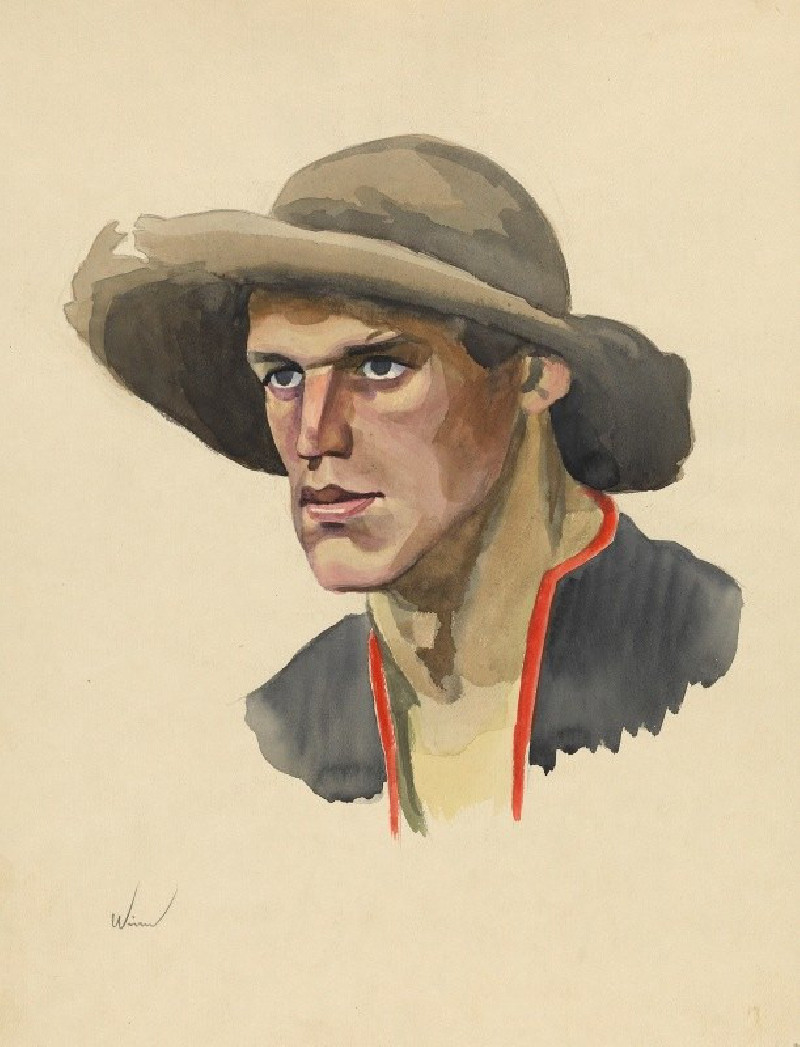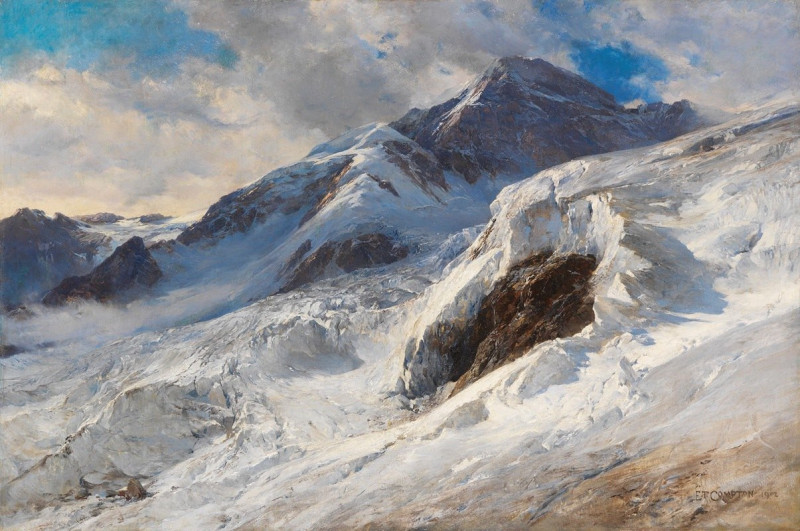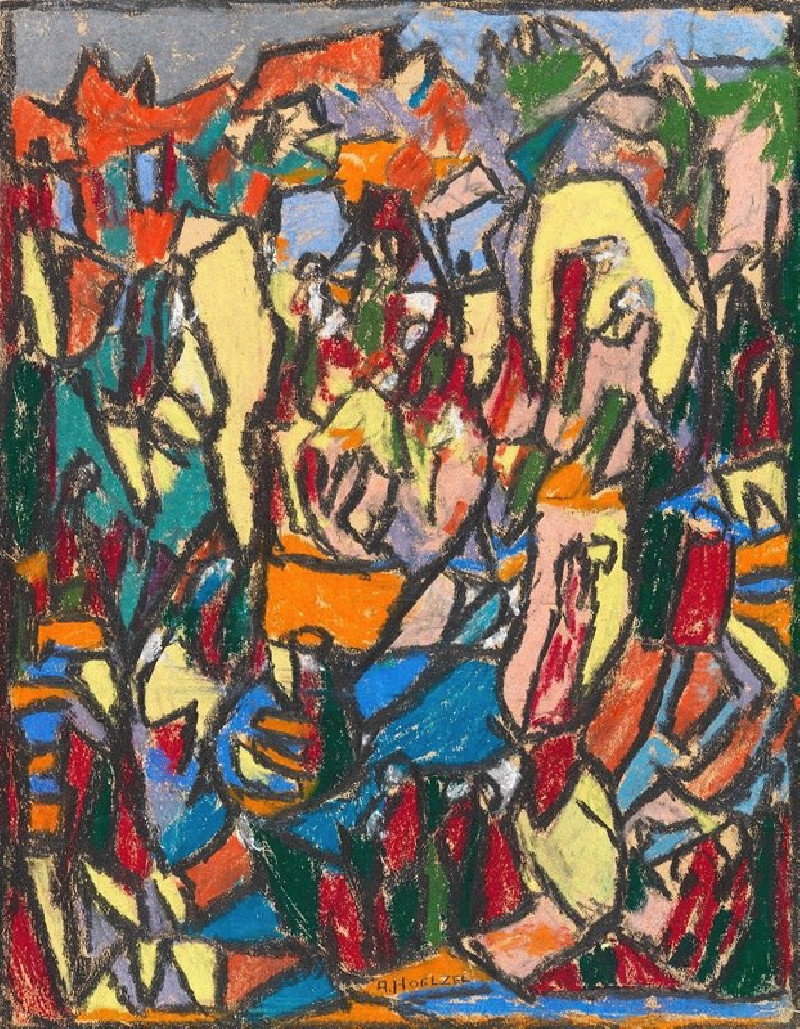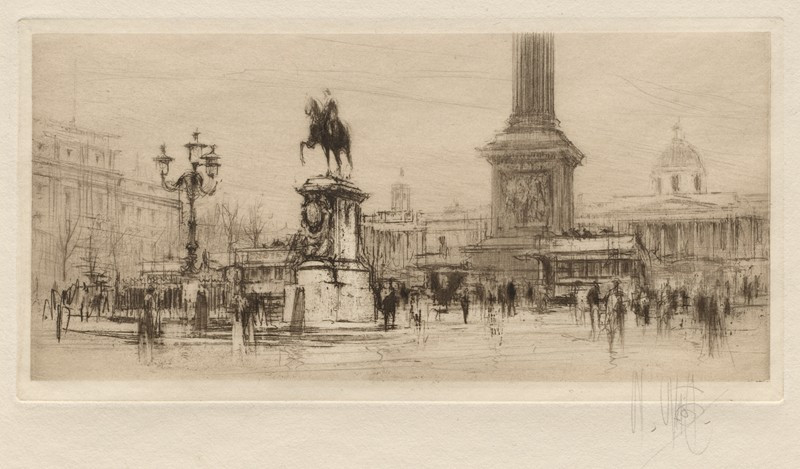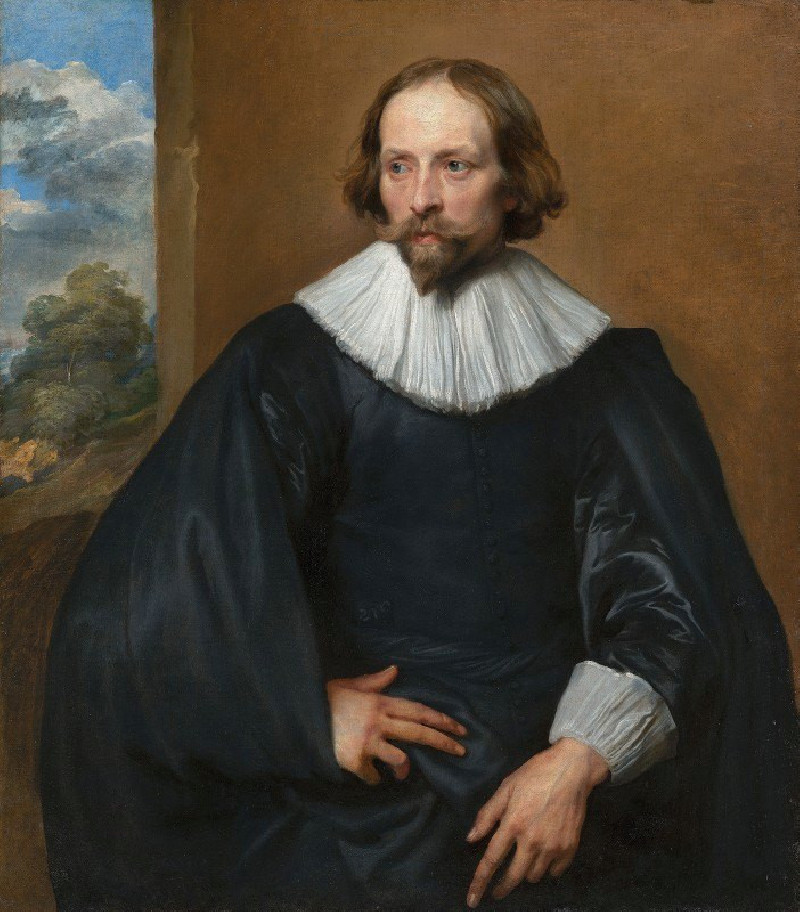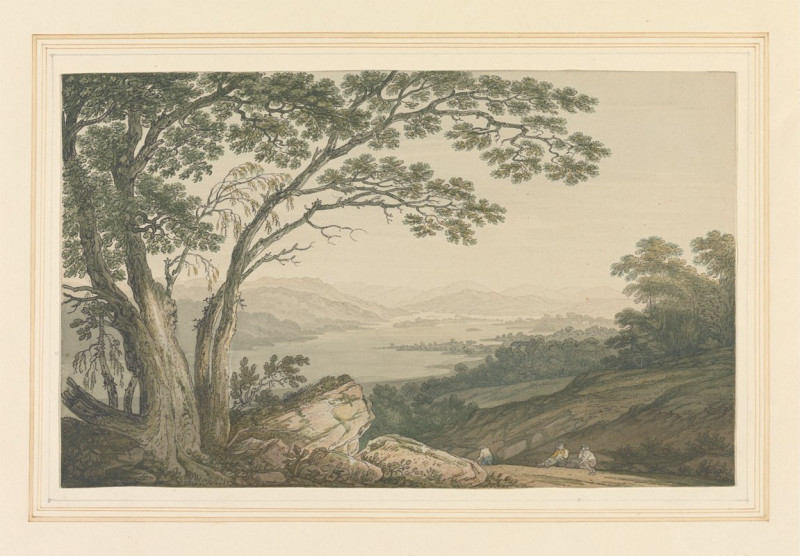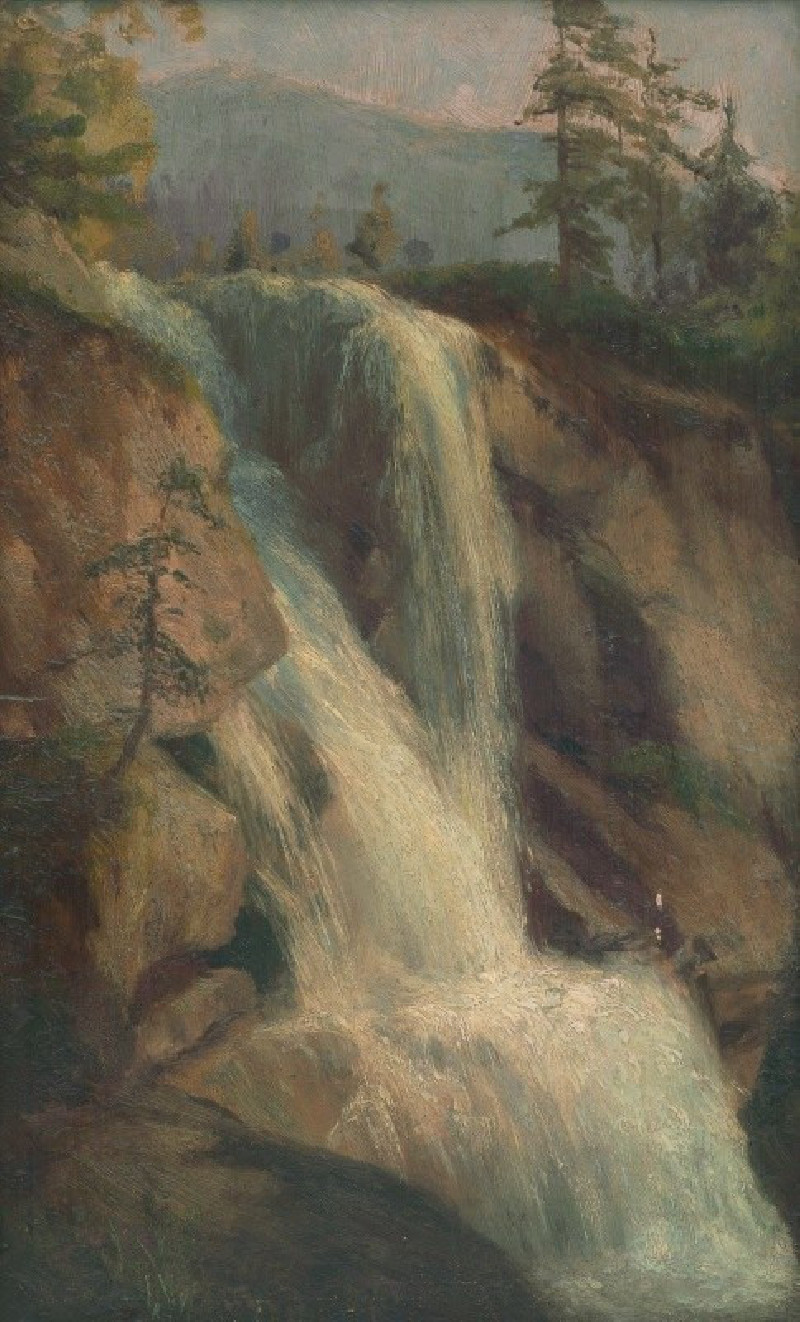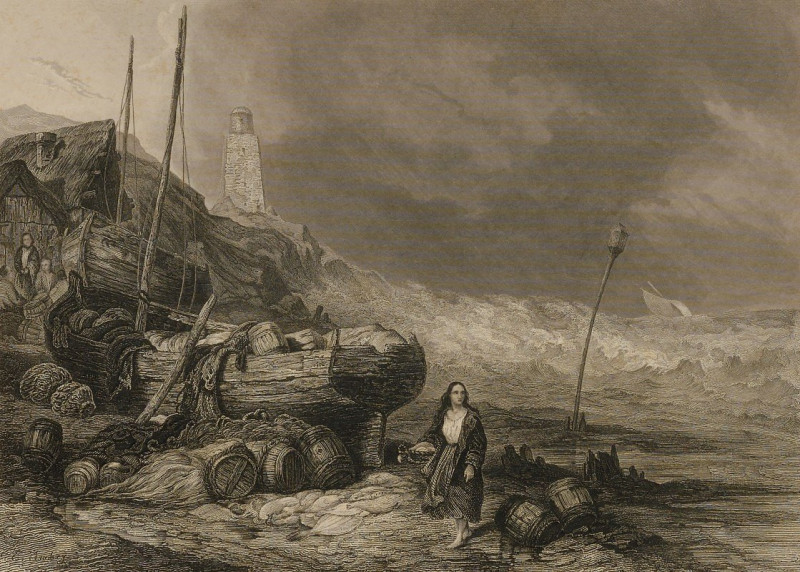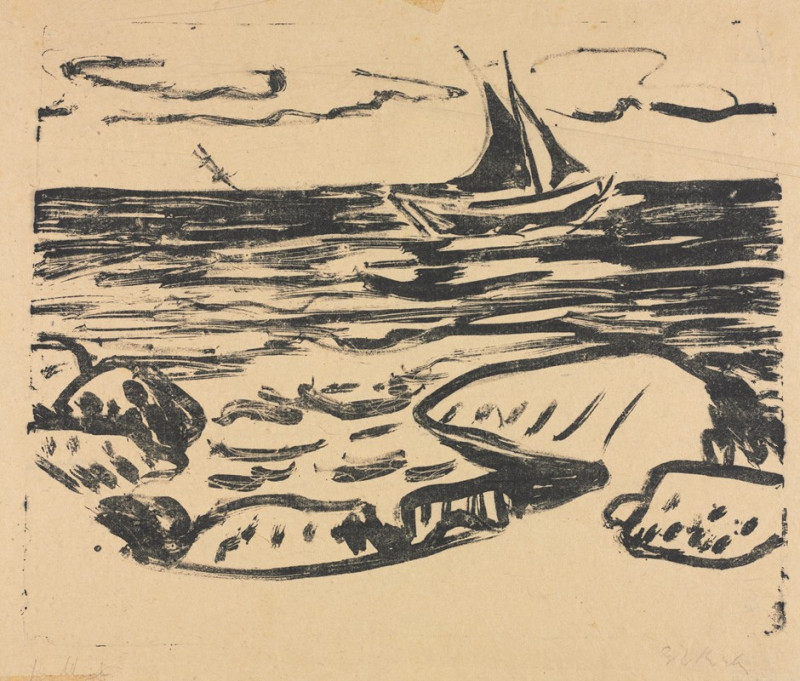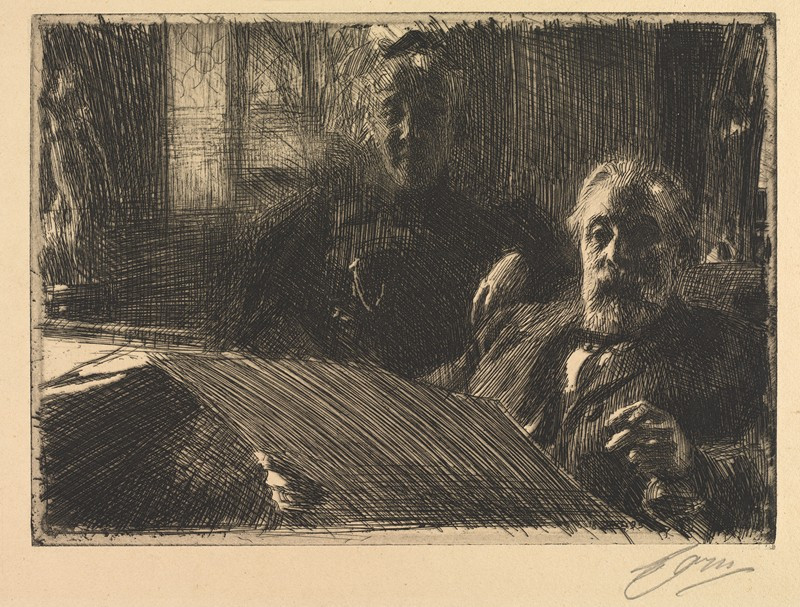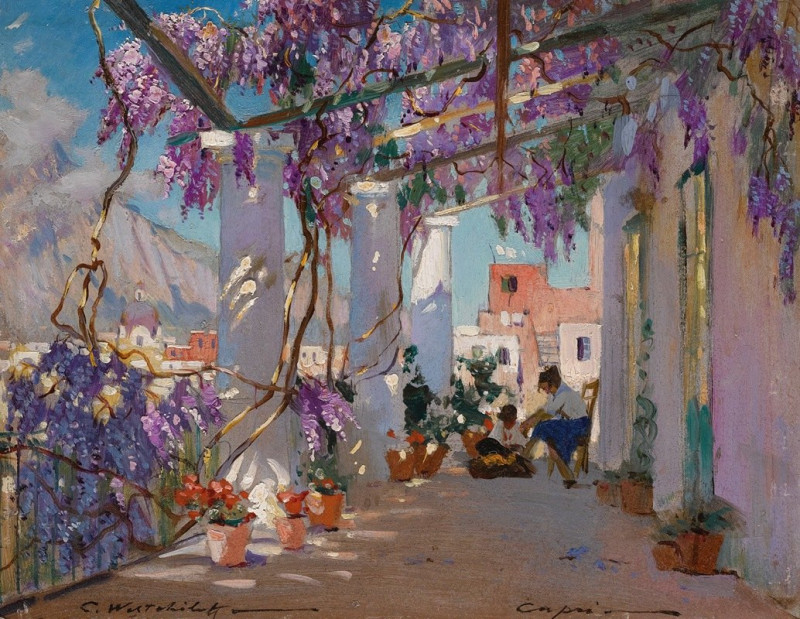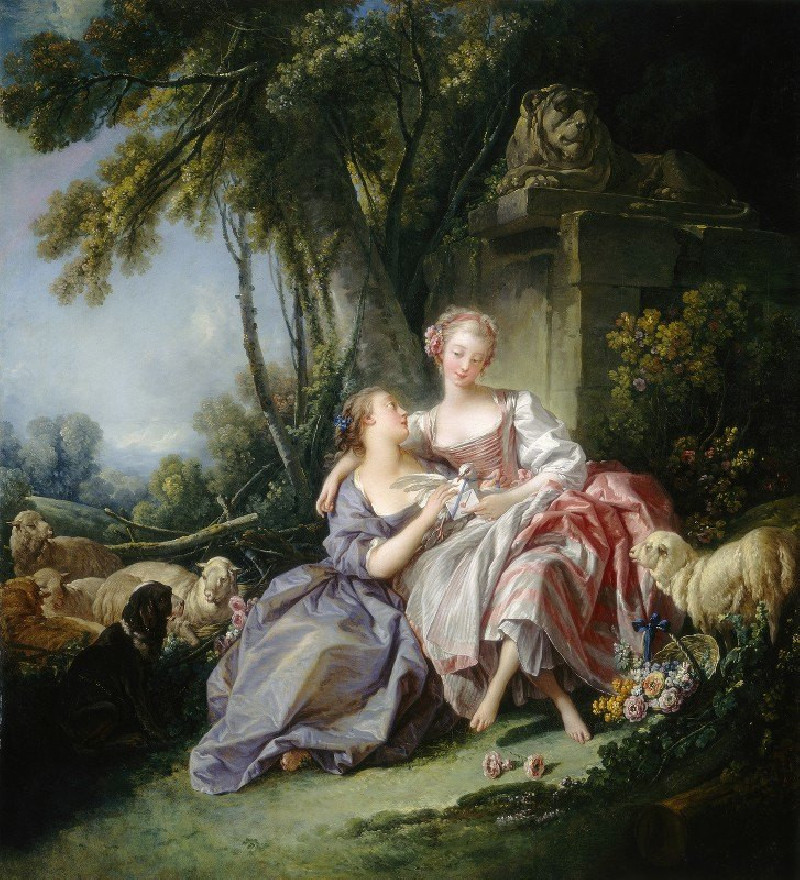Autoportree (1929)
Technique: Giclée quality print
Recommended by our customers
More about this artwork
The painting "Autoportree" from 1929 is a compelling self-portrait by the esteemed Estonian artist Nikolai Triik. In this artwork, Triik masterfully captures his own image with a penetrating gaze that engages viewers directly, revealing a sense of depth and introspection. Dressed in a somber black shirt which contrasts starkly against the vibrant, lush greenery in the background, Triik positions himself confidently, yet his expression retains an intriguing mixture of resolve and contemplation.The backdrop of the painting is touched with strokes of greens and yellows, suggesting a lively, leafy canopy under which the artist stands. The brushwork is vigorous, imbuing the scene with dynamic energy that contrasts with the solemnity of Triik’s pose and facial expression. His right hand subtly holds a cigarette, adding a casual aspect to his otherwise formal portrayal.This portrait not only showcases Triik's skill in rendering human emotions and physical appearance with vivid colors and bold outlines but also serves as a personal statement of his identity and artistic presence during the late 1920s.
Delivery
Returns
Nikolai Voldemar Triik was an Estonian Modernist painter, graphic artist, printmaker and professor. His work displays elements of Symbolism and Expressionism.
He came from a middle-class family. After graduating from the public schools in 1901, he enrolled at the Saint Petersburg Art and Industry Academy, but was expelled for participating in a student strike during the 1905 Revolution.

